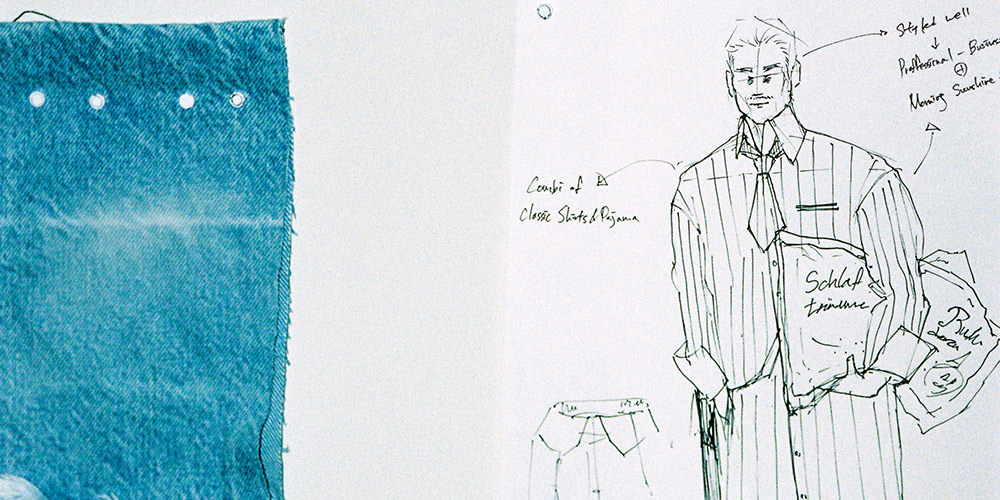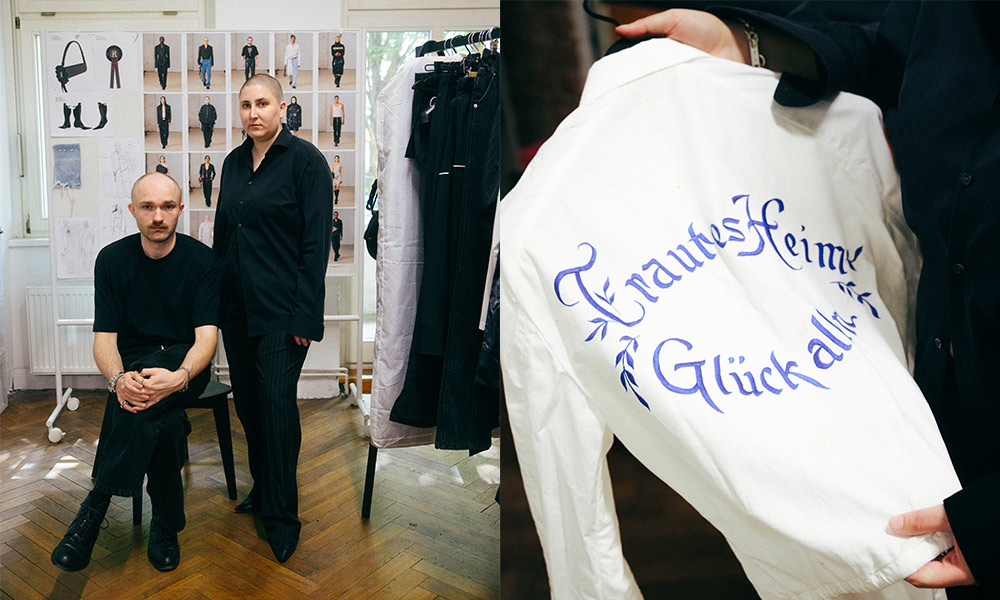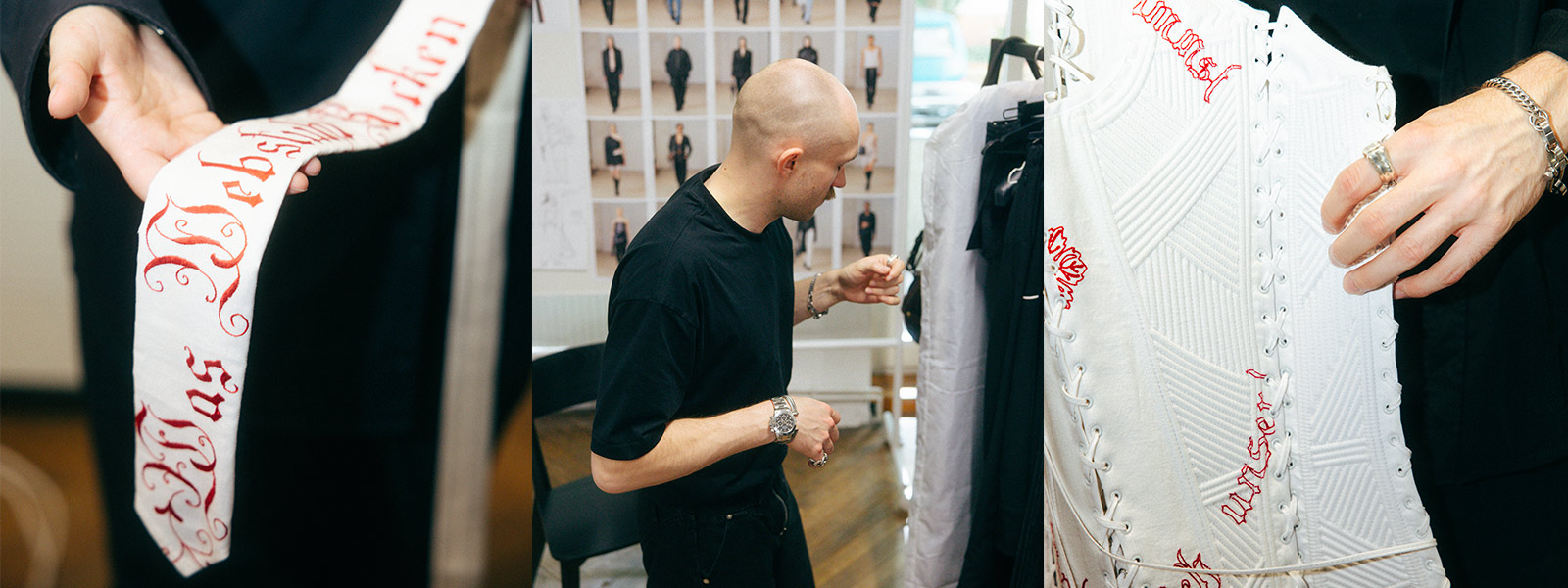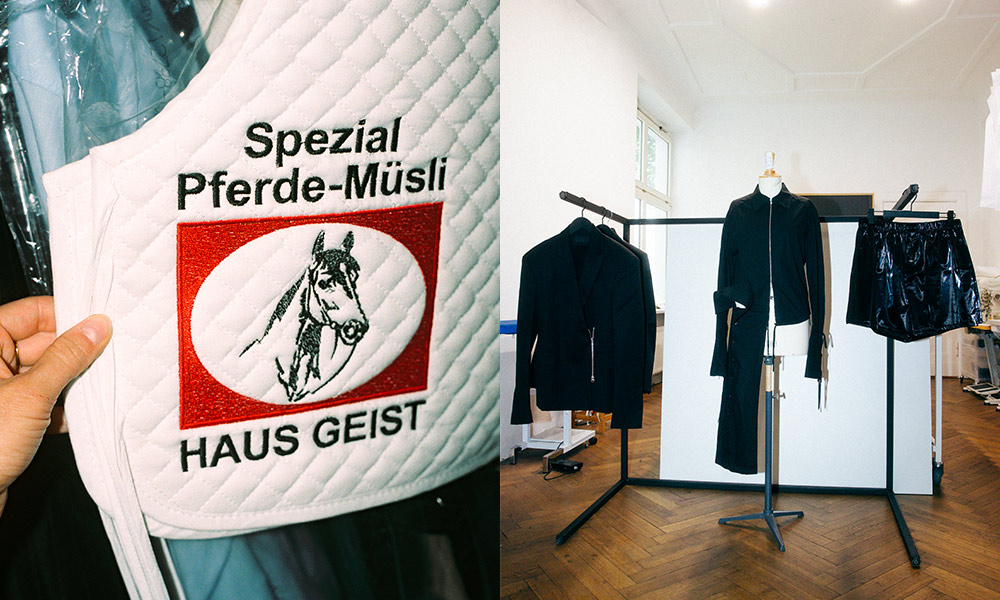
SUSTAINABLE SYMPOSIUM
RICHERT BEIL
by Oliver Dahle
Focusing on a genderless wardrobe, the duo have since 2014 reinvented timeless fashion in a modern manner. They are not just working together but also a couple in their private life, operating from their studio in the eastern outskirts of Berlin. Having their home ground as a primary inspiration, the brand is socially aware, modern and quintessentially Berlin.
Earlier this summer you presented your SS24 collection during Berlin Fashion Week. Could you tell me a little bit about the collection?
Jale Richert: Basically, it’s a very personal collection. It has something to do with our childhood memories. We took many parts from previous collections and redid them in the way we always wanted them to be. It’s kind of the best of what we have done before. Also, it was really important for us to have a diverse cast.
Because gender neutrality is very important for you, isn’t it?
Jale: Yeah, the idea is also to show some tension between older males and younger queer people and to have this conversation in the collection.
Where do you find your inspiration?
Michele Beil: By people. It’s always people and their behaviour, it’s always there. What people are doing, what people are feeling.
Jale: Basically in this collection, every look is telling a story. This was the idea from the beginning. To have a collection where there’s no filling look or no commercial look. There’s a story in every look that tells the story of RICHERT BEIL. This is super important to us. We’ve done it in previous collections, but now it’s more precise and with less compromise.

There’s a lot of iconography and quotes in the collection, mainly written in German. What do these mean?
Jale: These are old household towels and fabrics. They used to be for girls when they left their homes to get married. They then get these towels with the quotes, where it says like ’take care of your husband’ or ’you have to cook a good meal’ and old school ways like that. For us, it’s important to show that we want gender equality, no matter what gender you are, it should be equal. Then there have been a few influences from our private lives. For example, my father is a reverend, which has been an inspiration for me.
Michele: Another example, is how I always had to go with my sister to horse competitions. This explains why there are some pieces inspired by horses.
Jale: I think for us it’s easier to communicate through fashion than to explain it by words. If you look at the collection, if you take some time, you directly understand what it wants to say. It’s very personal.
Speaking about being personal, you’re a couple in your private life and are living together. How do you reflect on work-life balance?
Michele: Actually, this is something we don’t talk about that much.
Jale: I don’t like the word ‘work-life balance’, because I love to work and work is my life. I also don’t see it as work, it’s more about taking time for myself and going deeper inside of me as an artist. It’s a development and this is why I enjoy it so much. And as a couple, of course, it’s even deeper because you have two characters getting along in this whole context.
Who comes up with the ideas and what does the creative process look like?
Michele: There’s no divide like ‘Okay, I have the ideas’.
Jale: I think I’m doing the concept and then Michele is developing it to make it special. Then we have a great team and everyone that’s involved; hair, makeup, styling, casting are also giving input and investing a lot of time. So we’re very thankful that we can work in this team.

Berlin as a city, what does it mean to you?
Michele: I think Berlin is one of the most political cities in Europe. That has always inspired us. We love Berlin.
Jale: It’s also our hometown. What I like about Berlin is that it’s not Paris, it’s not New York, it’s Berlin and there’s not much fashion going on here. It’s not like that, It’s not a huge industry here. You can still make your point, you can still connect with others here. It’s a very small community, but I think it’ll turn out as a great community as well. It’s also changing the way people see fashion because it’s more political, it’s more diverse and also more conceptual — this is what I like.
I guess it comes back a lot to what you said about being inspired by people. But how are you working with sustainability?
Jale: We always work sustainably. We search for organic and certified fabrics. But we also have a product line which is called ‘Treasure Hunt’, where we just treasure. For example, as we did for our latest collection, regarding the household fabrics. We do a lot of research on what we like and then we get a small bunch of these towels or something, which we then just make one or two styles out of, or sometimes just put like a sleeve in this fabric. Everything that is partially, or fully recycled is then part of the Treasure Hunt line.
And is that going into the main collection, or is it a specific line?
Michele: It’s one-of-a-kind pieces.
Jale: It’s still in the main collection, because we are not a big brand having a mass production, so we can still do it. Also when we, for example, have a style we produce more often, then we make sure that it’s coming from responsible mills and partners.

Credits: Pictures by Lotte Thor, Interview by Oliver Dahle